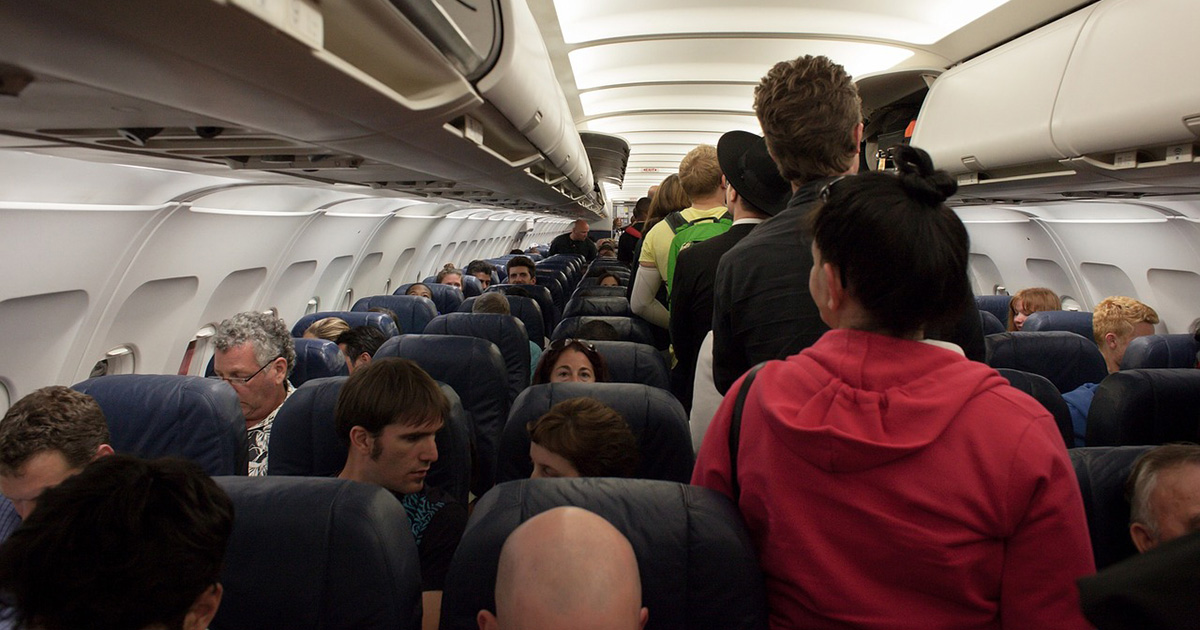Traveling Tips

While epilepsy may require additional precautions and planning, it should not stop you from having new adventures locally or abroad. With proper preparation you can have a stress-free travel experience. From traveling by car to flying with epilepsy, there are tips to managing seizures as well as laws to protect passengers.
There are two Federal Civil Rights Laws that protect passengers with disabilities. The Americans with Disabilities Act protects all aspects of travel by bus, rail, cruise ships and while in an airport (prior to boarding the flight). The Air Carrier Access Act protects people with disabilities while on an airplane. People with epilepsy are covered under both laws even when they are seizure free. People with epilepsy may also have additional medical conditions that qualify as disabilities under these laws.
Before traveling anywhere, we suggest you consider the following items to make your trip a successful one:
- Make sure that everyone you are traveling with is seizure first aid certified. They should also be aware of your personal seizure action plan.
- The availability of medical help. Some travel methods may be better able than others to help you if you have a seizure emergency.
- Accommodations for specific needs such as diet, mobility, and places to recover after a seizure. Additionally, make sure you have enough food and water packed with you to remain comfortable throughout your trip.
- Travel environment and flexibility of travel plans
By Car
Driving can be complicated for people living with epilepsy. Regulations about driving vary in different countries and states. People with epilepsy must generally be seizure free for a specific period of time in order to drive. Sometimes, driving may be restricted to specific times of day or in special circumstances. This depends on where you live and your type of seizures. You should discuss this with your healthcare team.
If you have epilepsy and you want to travel by car, first look at your seizure control and make sure you can legally and safely drive. If you can’t drive, can you travel with a friend or family member who does drive. When driving, remember the following:
- Take frequent breaks and don’t drive when you are overtired, if you have missed any medicine, or are at a higher risk of seizures for other reasons.
- If you are sensitive to flashing lights, also called photosensitive epilepsy, don’t drive at night, if possible, especially on highways. Headlights coming from the opposite direction can produce a flashing effect.
Air Travel
Air travel consists of two parts: the airport and the airplane. Different rules apply to each part of flying with epilepsy. The ADA applies while you are in the airport. However, once you board on the airplane, the Air Carrier Access Act applies (ACAA).
Important Considerations:
- You can never be forced to travel with a companion just because you are a person with epilepsy. You also don't have to disclose that you have epilepsy. The rules for what type of service dogs will be allowed onboard the plane can be found on the United States Department of Transportation website. Bringing a service dog along with you on a flight will require advanced planning.
If you are a person who uses medical marijuana to help control seizures, there are a few things to consider when traveling by airplane. Marijuana is still a Schedule I drug. You should give careful consideration about traveling with it. You may live in a state where medical marijuana is legal but be traveling to a state where it is not legal. In addition, when you are on an airplane, you are flying in space governed by the Federal government. While TSA are not law enforcement officers with the power of arrest, they do have the power to detain you and call local law enforcement. Traveling to a foreign country with medical marijuana should be approached with great care and you should research the consequences of that. You can find more information from TSA about traveling with medical marijuana, and what is considered legal on their website.
When considering air travel, talk to your healthcare provider first. The Aerospace Medical Association recommends that people who are still having seizures travel with a companion, but by law you do not have to travel with a companion. Wearing a medical bracelet, necklace, or other form of identifications for your epilepsy is also advised in this setting. Other items to think about when traveling by plane include:
- Consider the impact of changing time zones, sleep deprivation, and long delays or travel times on your seizures and whether air travel is recommended.
- Identify a pharmacy that is close to your destination. In case you lose your medication or do not have enough medication with you, this can ensure that you do not miss a medication dose.
- Travel with a companion – this is especially important for people with frequent seizures or seizures with a change in your awareness or behavior, or for those who are traveling long distances.
- Bring a letter from your doctor describing your ability to travel by airplane and carry a completed Seizure Action Plan outlining what to do should a seizure occur.
- Talk to the airline in advance – ask for special seating arrangements so you are closer to the front where you can get help if needed. If possible, ask for an empty seat next to you so you can lie down if a seizure occurs.
- Carry a supply of medicines with you (in properly labeled bottles) so it is available if you need it during the flight.
- If you (or your child) have clusters of seizures and use "as needed" or rescue medicine, talk to the doctor in advance about how to manage these.
- For general information on medical issues and flying, take a look at the Aerospace Medical Association's Medical Considerations for Airline Travel and Health Tips for Airline Travel.
- Most importantly, remember to prioritize your wellness when traveling. Anxiety and stress are common feelings when traveling somewhere outside of your normal routine. However, mood changes can be a trigger for seizures. We recommend practicing techniques to reduce your anxiety before a trip so that you can have a fun time with your family and friends and keep your seizures controlled.
By Cruise Ship
The United States Department of Transportation has information regarding you rights on cruise ships. In addition, each major cruise line will have its own policies. It is helpful to have an understanding with the cruise line well in advance of your travel date. Getting that agreement in writing is always helpful for boarding day. The more complex your medical needs, the more planning is required for a successful experience. Your needs may include:
- An accessible cabin
- Use of a service dog
- Dietary restrictions that can be met
- Use of medical marijuana or other Schedule I drugs while onboard
By Train or Bus
Traveling by train or bus may be a good option for people who don’t drive or when airline travel is not possible. Keep in mind that seizures should still be carefully considered and whether you should travel alone or with a buddy. Train or bus travel does allow more flexibility to get help if needed after a seizure or if clusters of seizures occur. Travel plans are generally more flexible too and you could get off the train early if help is needed before you get to your destination.
- People who wander during a seizure or who are at risk for falls need to be careful on train platforms. Have someone accompany you on and off trains and while waiting on platforms so you don’t wander or fall onto train tracks during a seizure.
- Make sure that train or bus personnel know about your seizures too and know what to do should you have one while traveling.
Summary
Traveling safely with seizures is not a problem for many people, but for some, extra care and planning will be needed. Think carefully about how to get to your destination when planning vacation or work trips. This may help you recognize potential problem areas and come up with creative solutions ahead of time! Planning ahead may also lessen the stresses of traveling and make it more enjoyable for everyone.
Resources
Epilepsy Centers
Epilepsy centers provide you with a team of specialists to help you diagnose your epilepsy and explore treatment options.
Epilepsy Medication
Find in-depth information on anti-seizure medications so you know what to ask your doctor.
Epilepsy and Seizures 24/7 Helpline
Call our Epilepsy and Seizures 24/7 Helpline and talk with an epilepsy information specialist or submit a question online.
Tools & Resources
Get information, tips, and more to help you manage your epilepsy.



